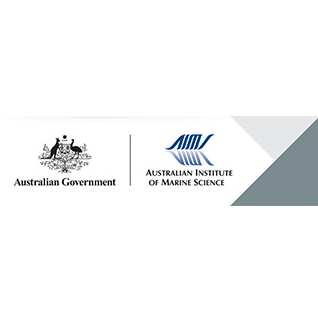Full description
Bacterial communities in eight 16S rDNA clone libraries from calcareous sediments were investigated to assess bacterial diversity in sediments of the Great Barrier Reef and to investigate differences due to decreased water quality. Samples were taken from 2 locations (fore and back reefs) on each of 4 coral reefs: nearshore (Fitzroy and High Islands, subject to enhanced runoff) on the outer shelf (Hastings and Flynn Reefs, pristine conditions).Out of 221 non-chimeric sequences, 189 (85.5%) were unique and only one sequence occurred in more than one library. Cluster analyses and comparison to published sequences indicated that sequences retrieved belonged to the alpha, gamma and delta subdivisions of the Proteobacteria; Cytophaga, Flavobacteria, Bacteroidetes (CFB) group; Cyanobacteria; Planctomycetaceae; Verrucomicrobiaceae; and Acidobacteriaceae.Carbon (organic carbon, total carbon) and nitrogen in the sediments were analysed from two additional samples from each location. Calcium carbonate (%), exposure (front=more exposed to wave action; backreef=less exposure) and mean grain size (mm) were also recorded.Neighbour-joining trees were constructed representing sequences from the 8 clone libraries.All data sequence data are deposited on Genbank (DQ256505 to DQ256725).To contribute to the knowledge on microbial communities of the Great Barrier Reef.To provide a first sequence-based description of bacterial communities on calcareous reef sediments of the GBR.To test if these communities harbour characteristic species or groups which could be used as indicators for land runoff or decreased reef health.
Closest matches to the Great Barrier Reef samples, GenBank accession numbers in brackets: arctic sea ice bacterium (AF468407); bacterium (AY258094); Balneatrix alpaca (BAY17112); Beggiatoa sp. (AF110276); benzene mineralizing bacterium (AF029047); cf Cytophaga (AF530130, AF530158); Cryomorphaceae bacterium (AB125062); Cytophaga fermentans (AB125062); Cytophaga sp. (AB015543, AB015545, AB073572); Defluvicoccus vanus (AF179678); Desulfobacterium cetonicum (AJ237603); Desulfobacterium corrodens (AY274450); Desulfovibrio vulgaris (M34399); endosymbiont (AF104473); Flexibacter canadensis (AB078046); Flexibacter roseolus (AB078061); Flexibacter sp. (AB058906); Geothrix fermentans (GF41563); gill symbiont (AB189713); Haslea wawrikae (AF514855); Lewinella persicus (AF039295); Lyngbya sp. (AY049751); marine bacterium (AF076897, AF406617, AY007676); marine gamma-proteobacterium (AY386339); marine snow bacterium (AF030776, AF030779); Nitrosococcus oceani (NOC29872); Orientia tsutsugamushi (D38625); Oscillatoria rosea (AB003164); Pseudomonas sp. (AB013829); Pseudospirillum japonicum (AB006766); Reichenbachia agariperforans (AB058919); Rhodopseudomonas julia (AY428572); Robiginitalea biformata (AY424900); Roseobacter sp. (AF098494); Saprospira grandis (AB088636); sponge symbiont (AF186415); sulfur-oxidising endosymbiont (AF165908, AF328856); sulfur-oxidising gill symbiont (X84984); sulfur-reducing endosymbiont (AF328857); symbiont (U78037); Teredinibacter turnerae (AY028398); Thalasomonas ganghwensis (AY194066); Trichodesmium thiebautii (AF091321); uncultured Acidobacteriaceae (AY225643) ; uncultured actinobacterium (AB116464); uncultured alpha-bacterium (AB015523, AB015526, AF406524, AF445669, AY225603); uncultured bacterium (AF143824, AF317768, AF328183, AF382112, AF382114, AF382143, AY133451, AY171303, AY171323, AY171332, AY171337, AY171357, AY171365, AY172271, AY193132, AY212707, AY216454, AY327875, AY344367, AY373412, AY375053, AY375097, AY500093, UBA56759); uncultured Bacteroidetes (AB116465, AF507866, AY225659, AY274839, UCY44123); uncultured delta-proteobacterium (AB015243, AB116394, AF424201, AF424227, AF424261, AJ58135, AY217484, AY225608, AY499998); uncultured Ectothiorhodospiraceae (AJ567603); uncultured gamma-proteobacterium (AB015252, AB015583, AB116435, AB116469, AF223300, AF351226, AY145601, AY225630, AY225635, U70702); uncultured Holophaga (UHO24100); uncultured marinobacter (AJ567576); uncultured Pirellula sp. (AF029076); uncultured planctomycete (AY114326, AY499808, BX294775); uncultured proteobacterium (AJ241015, AY193142); uncultured soil bacterium (AJ39044); uncultured verrucomicrobium (AY114328, AY354864, AY499834, UVE40110, UVE44122) ; unidentified bacterium (AB015533, AF317764); Vibrio cholerae (S0000145); Vibrio fortis (VSP51491); Xenococcus sp. (AF132783).
Lineage
Maintenance and Update Frequency: notPlannedNotes
CreditUthicke, Sven, Dr (Principal Investigator)
Modified: 22 08 2025
text: westlimit=145.95; southlimit=-17.2; eastlimit=146.3; northlimit=-16.5
Bacterial communities in Great Barrier Reef calcareous sediments: Contrasting 16S rDNA libraries from nearshore and outer shelf reefs: Uthicke S and McGuire K (2007) Bacterial communities in Great Barrier Reef calcareous sediments: Contrasting 16S rDNA libraries from nearshore and outer shelf reefs. Estuarine Coastal and Shelf Science 72: 188-200.
local : articleId=7373
- global : 9b6f6c2b-b364-4696-a55f-01619da33fd4


